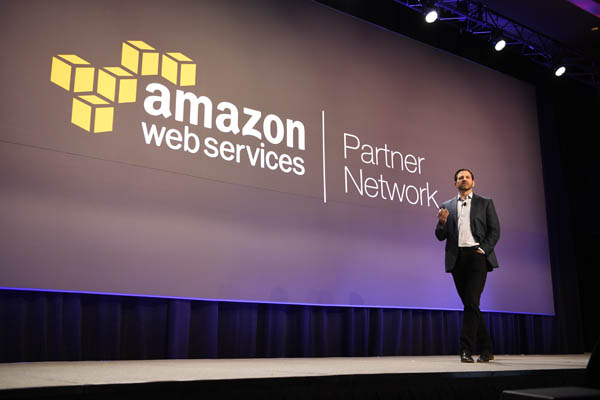LAS VEGAS – In the 1986 movie Star Trek IV: The Voyage Home, Lt. Commander of the U.S.S. Enterprise Montgomery Scott – better known as Scotty – had to deal with a 20th century computer.
At first, Scotty used his voice to interact with the PC by saying “Computer! Computer?” But Scotty had no success because the PC did not have the intelligence to understand voice commands. He was handed a mouse and keyboard by a supporting character named Dr. Nichols. Dr. Nichols tells Scotty to just use the keyboard. Scotty’s reply is a classic line from the Star Trek series: “Keyboard? How quaint.”
Fast track to 2017 and Amazon Web Services, with the release of Alexa For Business, may have made the keyboard a relic of the past.
Today, the Alexa device enables users to use voice commands to turn on the lights or to run ITWC’s Hashtag Trending podcast. At the 2017 AWS Re:Invent show, the cloud provider introduced Alexa for Business that has the potential to make voice the No. 1 way to interact with business apps such as ERP systems, Salesforce, email and others.
Alexa for Business is being positioned by AWS as an intelligent assistant for work or the office. Verner Vogels, the CTO of AWS, anticipates Alexa devices being spread throughout an office or even on every desk.
Vogels said that Alexa for Business will be launched as a managed service because it needs to scale throughout an office and into larger enterprises.
Alexa for Business will be able to enable staff members own skill sets exposing other employees to better sources of intelligence.
Tara Walker, a technical evangelist for AWS, said in a blog post: “Alexa for Business brings the Alexa you know and love into the workplace to help all types of workers to be more productive and organized on both personal and shared Echo devices. In the workplace, shared devices can be placed in common areas for anyone to use, and workers can use their personal devices to connect at work and at home.”
Some of the business tasks Alexa for Business is ready for include: joining meetings in conference rooms by saying “Alexa, start the meeting”.
- Turn the video conferencing equipment using voice commands.
- Order new office supplies, again by using your voice.
- Make phone calls.
- Send voice messages.
- Check your calendar or co-worker’s calendars.
- Schedule meetings.
- Manage a to-do list.
- Set reminders.
But possibly the most integrated aspect of Alexa for Business is its integration with business apps such as Salesforce, SAP’s Concur and Splunk where your voice can tell those apps to find key pieces of data or other forms of information.
“You can ask questions directly into these app environments,” Vogels said.
He added that Alexa for Business gives users access to these workloads without going to a web page. Vogels believes there will be a growing number of channel partners who will be building skills for Alexa for Business.
On top of that Vogels said AWS is looking to deploy Alexa for Business solutions with Cisco Systems and Polycom for their conference room solutions. Cisco recently announced its own digital assistant for meetings called the Spark Assistant.
“Voice is the key thing. It’s a natural way for interacting with systems. It is a disruption along with other deep learning tools we have,” Vogels said.
But there will be more work to be done on the back end for Alexa for Business. He believes voice will be the main interface and it has the potential to unlock users to a much bigger audience than they have now.
Those back end systems will have to transition from page-based systems to incorporate conversations that can interact with different software components.
“We want to be your partner in that role. These are the systems of the future. This is not trivial. There will be new ways of building systems and it’s important to look at these architectures to have natural interfaces,” he added.
In terms of the managed service behind Alexa for Business, the channel will be able to provision and manage shared Alexa devices for the workplace setting up location and assigning access and enables unique skills sets for the users. There are also professional services opportunities for configuring conference room settings.





